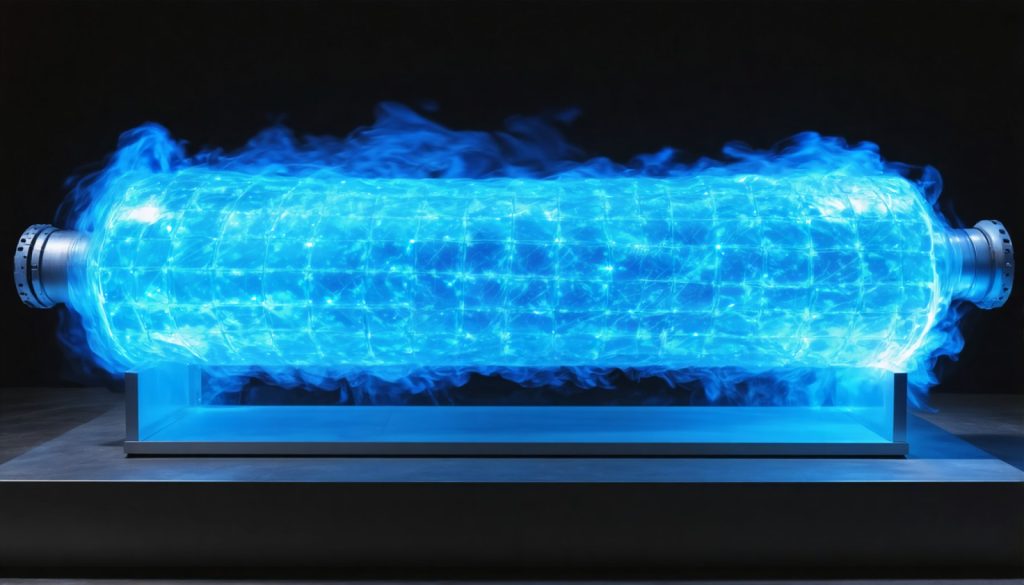
- Idaho National Laboratory is pioneering nuclear fusion technology, focusing on the innovative fusion blanket as a key component for clean energy production.
- The fusion blanket captures and converts neutron energy to heat while generating tritium, essential for sustaining nuclear fusion and offering a sustainable path to electricity without radioactive waste.
- Supported by the Department of Energy, this initiative is part of the Fusion Innovative Research Engine collaboration, aiming to achieve operational fusion within a decade.
- Integrating fusion advancements with existing fission capabilities demonstrates a strategic approach, utilizing established strengths to reduce costs and maximize efficiency.
- Fusion blankets represent a groundbreaking shift in nuclear science, promoting precision and ecological mindfulness for future energy solutions.
Beneath the spectacular canopy of the Idaho skies, where innovation often defies the impossible, a quiet revolution is taking shape. In the heart of Idaho National Laboratory (INL), seasoned scientists are embarking on a trailblazing journey that could redefine the future of energy. At the center of this endeavor lies the inconspicuous yet formidable nuclear fusion blanket, a potential linchpin in the quest for unlimited, clean power.
Imagine a layer of technological armor nestling delicately between the volatile plasma core of a fusion reactor and the fragile magnets essential for containing its explosive energy. This fusion blanket is designed not only to guard against immense temperatures but also to recreate a miniature stellar process on Earth, harnessing the energy that fuels our sun.
The fusion blanket’s role is nothing short of Herculean. Acting as a self-sufficient fuel generator, it transforms neutrons into tritium—an elusive yet vital fuel necessary for sustained nuclear fusion. By capturing the kinetic energy of these neutrons and converting it to heat, it offers a sustainable path to electricity production, a prospect that elicits dreams of an energy revolution without the shadows of radioactive waste.
This bold initiative is part of INL’s participation in the Fusion Innovative Research Engine collaboratives, backed by significant support from the Department of Energy. The ambition? To forge a vibrant ecosystem for fusion innovation, propelling technologies that lay the groundwork for operational fusion within a mere decade.
Integrating such transformative technology within the framework of established fission capabilities is no small feat. Yet, the approach reflects unparalleled pragmatism and foresight, allowing for crucial testing without the prohibitive cost of developing separate facilities. Beyond the science, the strategic deployment of resources showcases a nuanced understanding that transformation often hinges on leveraging existing strengths.
While laser fusion technologies ambitiously aim for solar-level heat, fusion blankets represent a fundamental shift in how we perceive and utilize nuclear sciences. They suggest an era where energy is harvested with precision, ecological mindfulness, and an eye firmly fixed on future generations.
The message is unambiguous: a new era of energy dawns not solely with technological breakthroughs but through meticulous collaboration between relentless innovation and enduring practicality. As the gears of this complex machinery align within INL, the world watches eager for the promised emergence of clean, inexhaustible power.
In this procedural symphony, let us remember: the path to sustainable energy is paved by visionaries who blend fearlessness with responsibility. The invisible threads of knowledge and innovation, the fusion blankets, quietly hold potential beyond current confines, aspiring to light up our world in unprecedented ways.
The Future of Energy: Unlocking the Secrets of Fusion Blankets
The Intricacies of Nuclear Fusion Blankets
The nuclear fusion blanket, a critical component within the Idaho National Laboratory’s (INL) groundbreaking research, acts as a transformative intermediary in nuclear fusion reactors. This technology aims to achieve sustainable and clean power equivalent to the energy produced by the sun. Here are some deep insights beyond the initial exploration:
– Critical Function: A nuclear fusion blanket’s essential function is to capture fast-moving neutrons from the fusion reaction. It uses materials like lithium to generate tritium, a necessary isotope for sustaining the reaction.
– Technological Marvel: The fusion blanket must endure extreme temperatures and radiation levels, demanding advanced engineering and materials science. Innovations in heat-resistant and neutron-absorbing materials are pivotal.
– Energy Conversion: It converts the kinetic energy of the neutrons into heat, which can then be utilized to produce electricity, heralding a sustainable energy future with minimal radioactive waste.
How-To Steps for Implementing Fusion Blanket Technology
To adopt this transformative technology, here are actionable steps that energy facilities could consider:
1. Research & Development: Prioritize investment in advanced materials that can withstand high temperatures and radiation.
2. Collaboration: Leverage partnerships between research institutions, like INL, and private energy companies to accelerate technology transfer.
3. Prototyping & Testing: Develop prototype fusion reactors to test fusion blanket efficacy under controlled conditions.
4. Funding & Support: Seek funding from government and private entities interested in sustainable energy.
5. Training Programs: Establish specialized training programs for engineers and scientists in fusion technology.
Real-World Use Cases
– Energy Sustainability: Fusion blankets could revolutionize global energy landscapes by providing a virtually limitless energy source with negligible environmental impact.
– Space Exploration: The compact and immense energy potential makes fusion reactors ideal for powering long-duration space missions.
Market Forecasts & Industry Trends
As fusion energy technology progresses, experts predict that:
– By 2040, operational fusion reactors may become economically viable, dramatically impacting energy markets (source: World Energy Council).
– A shift is anticipated from traditional fossil fuels towards fusion-based power systems, enhancing energy security without compromising environmental standards.
Controversies & Limitations
Despite its potential, the journey to practical fusion energy isn’t without challenges:
– Technological Hurdles: Sustaining a controlled fusion reaction and ensuring the integrity of components under severe conditions remain significant obstacles.
– Economic Feasibility: High initial investment and development costs pose economic barriers.
Reviews & Comparisons
Compared to other renewable energy sources, such as solar and wind, fusion energy:
– Offers consistent base-load power, unlike intermittent renewables.
– Produces vastly more energy per kilogram of fuel.
Actionable Recommendations
– Stay Informed: Follow developments from leading research institutions like Idaho National Laboratory for the latest updates.
– Support Green Policies: Advocate for policies that support fusion research and sustainable energy initiatives.
– Explore STEM Careers: Encourage educational pathways that focus on nuclear engineering and renewable energy fields.
Fusion blanket technology holds a remarkable promise for a future where energy is clean, sustainable, and abundant. Continued investment in research and international collaboration will be key to unlocking its full potential.



